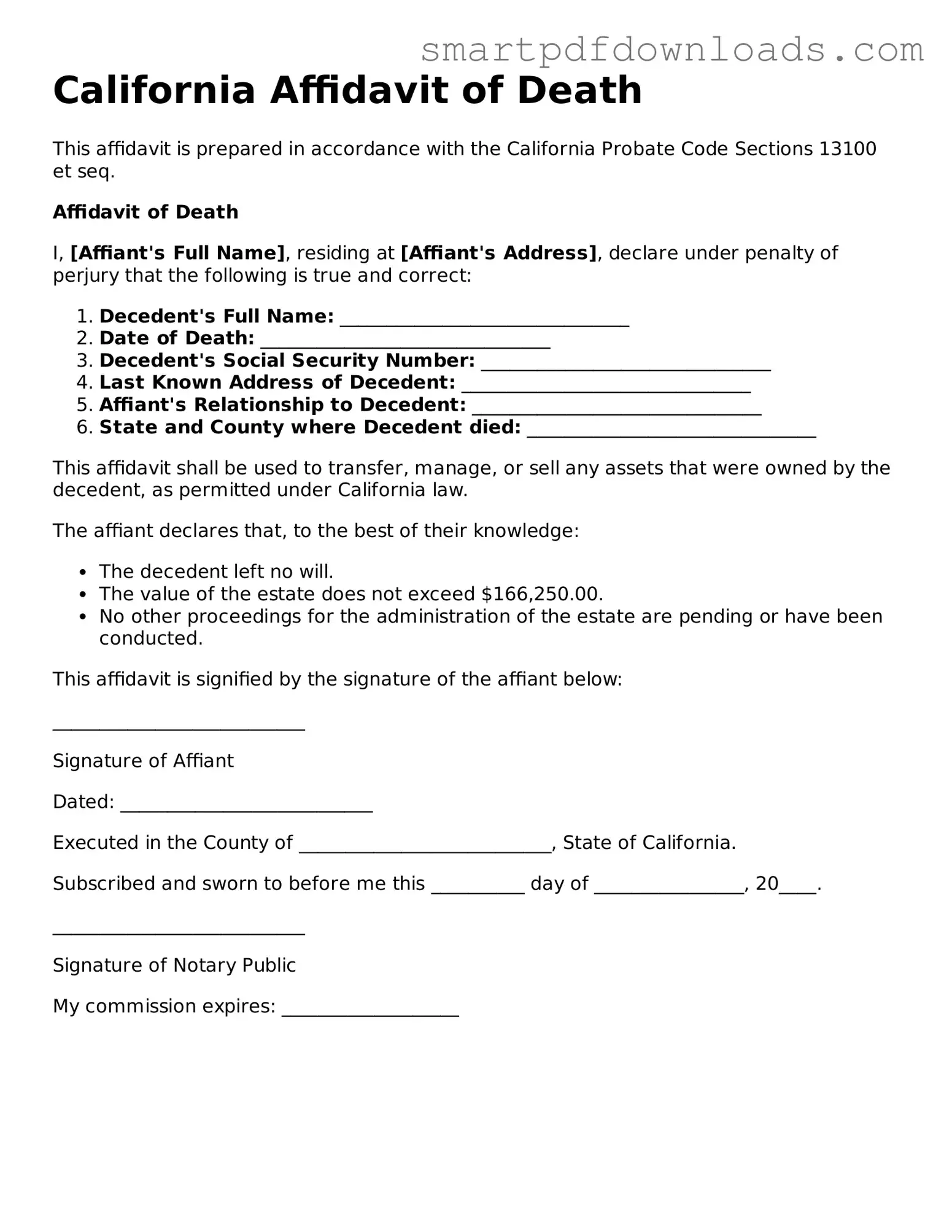California Affidavit of Death
This affidavit is prepared in accordance with the California Probate Code Sections 13100 et seq.
Affidavit of Death
I, [Affiant's Full Name], residing at [Affiant's Address], declare under penalty of perjury that the following is true and correct:
- Decedent's Full Name: _______________________________
- Date of Death: _______________________________
- Decedent's Social Security Number: _______________________________
- Last Known Address of Decedent: _______________________________
- Affiant's Relationship to Decedent: _______________________________
- State and County where Decedent died: _______________________________
This affidavit shall be used to transfer, manage, or sell any assets that were owned by the decedent, as permitted under California law.
The affiant declares that, to the best of their knowledge:
- The decedent left no will.
- The value of the estate does not exceed $166,250.00.
- No other proceedings for the administration of the estate are pending or have been conducted.
This affidavit is signified by the signature of the affiant below:
___________________________
Signature of Affiant
Dated: ___________________________
Executed in the County of ___________________________, State of California.
Subscribed and sworn to before me this __________ day of ________________, 20____.
___________________________
Signature of Notary Public
My commission expires: ___________________
